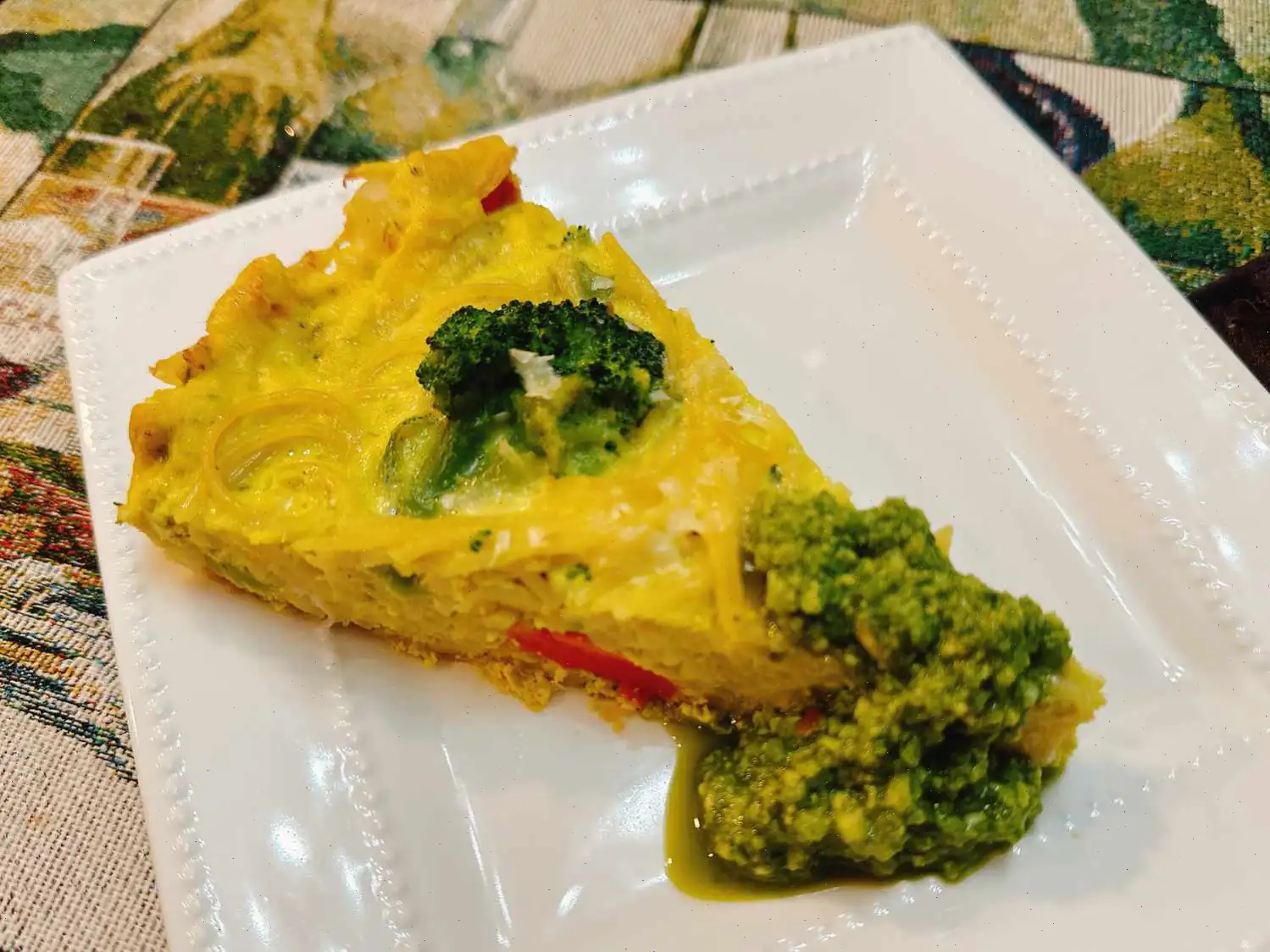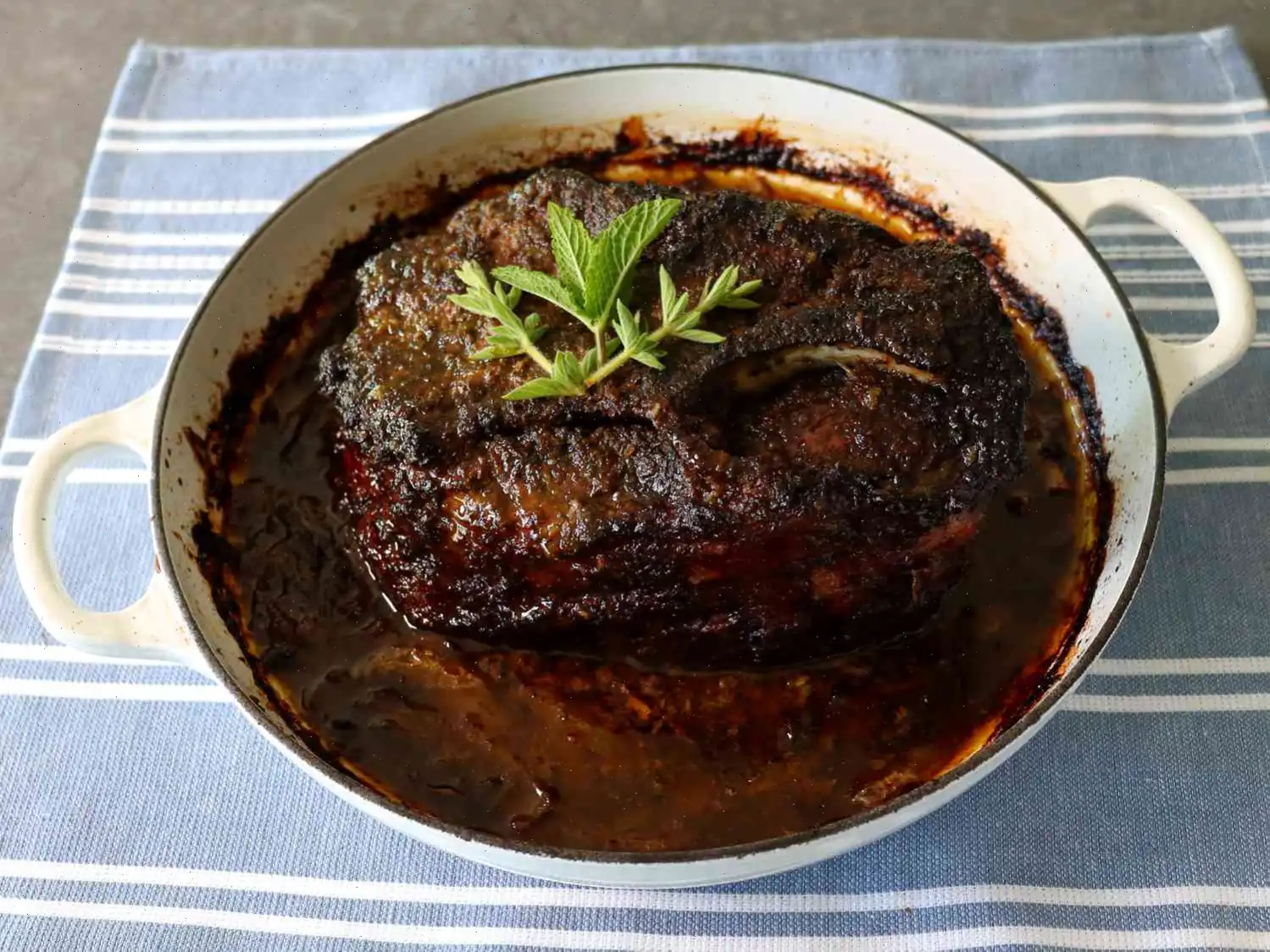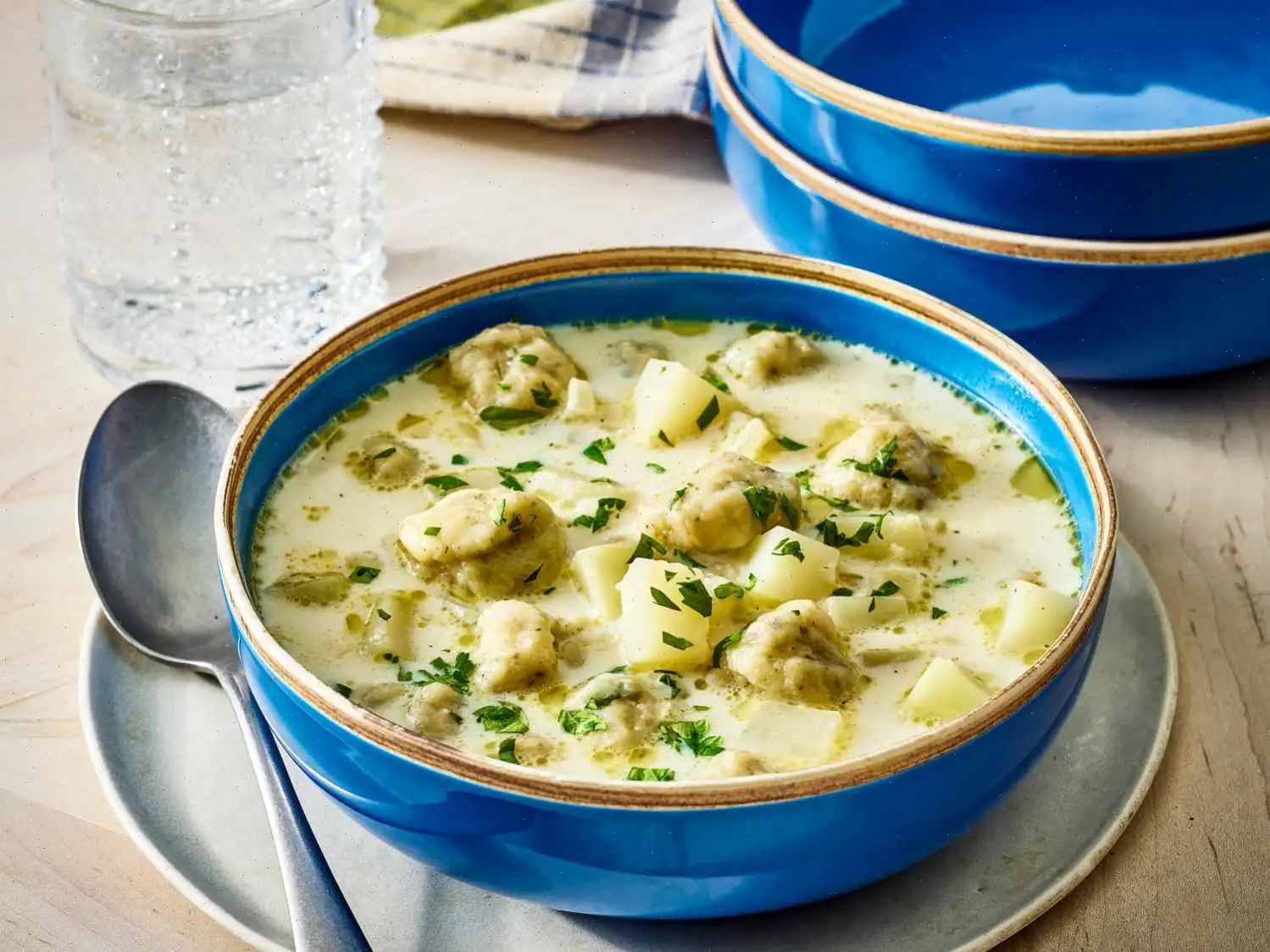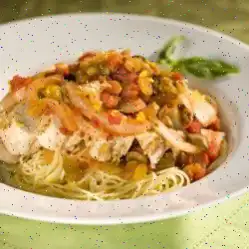
Pesto Spaghetti Frittata Recipe
Ingredients
This recipe yields 6 servings. Quantities are based on the original recipe; cooking times and steps remain the same even if ingredient amounts are adjusted.
- 6 duck eggs
- 1/2 cup shredded Parmesan cheese
- 1/4 cup half-and-half cream
- 1/4 cup ricotta cheese
- 2 tablespoons prepared pesto, plus extra for garnish
- 1 teaspoon fresh thyme leaves
- 1/2 teaspoon salt
- 1/4 teaspoon freshly ground black pepper
- 1 pound frozen mixed vegetables (carrots, broccoli, zucchini, cauliflower)
- 1 tablespoon unsalted butter
- 2 cloves garlic, minced
- 4 ounces cooked spaghetti (leftover is perfect)
Directions
- Preheat your oven to 400F (200C).
- In a large bowl, whisk together the duck eggs, Parmesan, half-and-half, ricotta, pesto, thyme, salt, and pepper until smooth and creamy.
- Place the frozen vegetables in a microwave-safe bowl and cook on high for 4-5 minutes, until thawed. Drain any excess water.
- Heat butter in an ovenproof nonstick skillet over medium heat. Add garlic and saut for about 1 minute, until fragrant.
- Add the steamed vegetables to the skillet and toss to coat with the garlic butter.
- Pour half of the egg mixture over the vegetables in the skillet.
- Toss the cooked spaghetti with the remaining egg mixture, then add it to the skillet on top of the vegetables.
- Cook on the stovetop for 5 minutes to let the eggs start setting.
- Transfer the skillet to the preheated oven and bake for about 25 minutes, or until the eggs are fully set and slightly golden on top.
- Remove from the oven, cut into wedges, and serve warm, garnished with extra pesto if desired.
Chef's Note
Duck eggs can be found at local farmer's markets. They are larger and richer than chicken eggs, with proportionally bigger yolks. If substituting with chicken eggs, use about 8 large chicken eggs for every 6 duck eggs.
Nutrition Facts (per serving)
- Calories: 236
- Total Fat: 14g (18% DV)
- Saturated Fat: 6g (28% DV)
- Cholesterol: 304mg (101% DV)
- Sodium: 449mg (20% DV)
- Total Carbohydrates: 13g (5% DV)
- Dietary Fiber: 3g (9% DV)
- Total Sugars: 3g
- Protein: 15g (30% DV)
- Vitamin C: 24mg (27% DV)
- Calcium: 207mg (16% DV)
- Iron: 2mg (12% DV)
- Potassium: 333mg (7% DV)
*Percent Daily Values are based on a 2,000 calorie diet. Individual daily values may vary depending on your calorie needs. Nutrient information may not be available for all ingredients.
The History and Origins of Pesto Spaghetti Frittata
The Pesto Spaghetti Frittata is a modern twist on two classic Italian staples: the frittata and the use of leftover pasta. Frittatas have been a part of Italian cuisine for centuries, originally designed as a simple, protein-rich meal that could stretch ingredients across multiple servings. The addition of spaghetti and pesto reflects a more contemporary approach, often born in home kitchens as a practical solution for leftover meals. This fusion combines Northern Italian flavors, especially from Liguriathe birthplace of traditional basil pestowith the comforting texture of baked eggs and pasta.
Regional Variations and Specialties
While frittatas are widespread across Italy, regional variations influence the ingredients and flavors. In Liguria, where pesto originates, the dish often incorporates fresh basil, pine nuts, garlic, Parmesan, and olive oil. Northern regions might use richer cheeses such as ricotta or fontina, while in central Italy, herbs like thyme or rosemary are commonly added. The vegetables mixed into the frittata can also vary seasonally, reflecting local produce, from zucchini and carrots to cauliflower and broccoli, giving each region its distinctive touch.
How It Differs from Similar Dishes
Unlike traditional spaghetti dishes served with sauce, the Pesto Spaghetti Frittata transforms pasta into a baked, cohesive egg-based dish. Compared to classic frittatas, which usually contain only vegetables, cheese, and sometimes cured meats, this recipe incorporates pre-cooked spaghetti, making it heartier and uniquely textured. The inclusion of pesto rather than a tomato or cream-based sauce highlights a fresh, aromatic flavor profile that sets it apart from similar baked pasta or egg dishes.
Where Youre Likely to Find It
This dish is commonly served at breakfast, brunch, or a light supper, especially in Italian households and casual bistros. It has grown in popularity in cafes and home-style restaurants that emphasize farm-to-table ingredients or seasonal menus. Because it works well as a make-ahead meal, it is often featured in buffet-style brunches or picnic-style gatherings where dishes are enjoyed warm or at room temperature.
Interesting Facts About Pesto Spaghetti Frittata
- Pesto, the signature ingredient, literally means "to crush" in Italian, referring to the original mortar-and-pestle method used to create the sauce.
- The dish is an excellent way to reduce food waste, turning leftover spaghetti into a flavorful, protein-rich meal.
- Using duck eggs, as in some recipes, makes the frittata richer and creamier, with larger yolks compared to chicken eggs.
- Though baked in an oven, this frittata retains a tender texture, unlike stovetop-only versions which can be denser.
- Its versatility allows for both vegetarian and meat-inclusive variations, catering to a wide range of dietary preferences.
FAQ about Pesto Spaghetti Frittata Recipe
Comments
Amanda Harris
12/19/2022 10:48:50 PM
Apart from the extra two chicken eggs used, I believe the suggested oven temperature is too high and the cooking time is too long. I frequently make frittatas and appreciate the notion of using pesto when herbs are in season. The dish was delicious when hot but quite heavy. I'll trust my instincts going forward.








